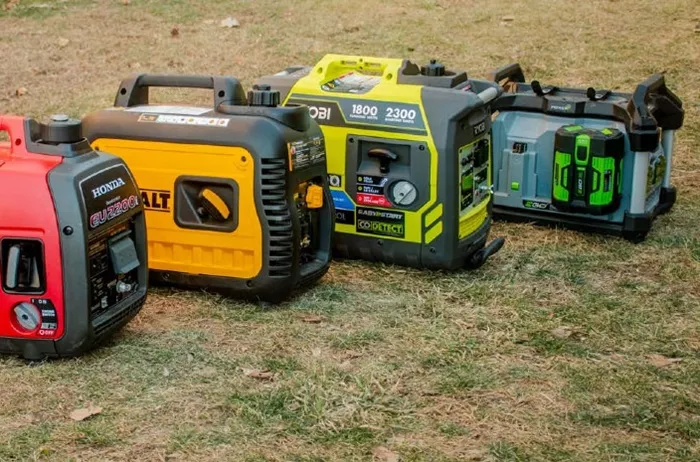Portable generators are essential for providing backup power during outages or for use in remote locations. Choosing the right one requires understanding key features like power output, fuel type, and safety mechanisms. This guide will help you make an informed decision.
Determine Your Power Needs
Before buying a generator, calculate how much power your home requires.
Understanding Wattage Requirements
Starting Watts (Surge Power): The extra power needed when appliances start (e.g., refrigerators, air conditioners).
Running Watts: The continuous power required to keep devices running.
Steps to Calculate Power Needs
- List essential appliances (lights, fridge, sump pump, etc.).
- Check each device’s starting and running watts (found on labels or manuals).
- Add running watts for all devices you’ll use simultaneously.
- Identify the highest starting wattage and add it to the total running watts.
Example Calculation
Refrigerator: 800W running, 1,200W starting
Lights: 200W running
Sump pump: 1,000W running, 2,000W starting
Total Running Watts: 800 + 200 + 1,000 = 2,000W
Highest Starting Watts: 2,000W (sump pump)
Total Needed: 2,000W (running) + 2,000W (starting) = 4,000W
Choose a generator with at least 4,000-5,000 watts for this setup.
Choose the Right Fuel Type
Portable generators run on different fuels, each with pros and cons.
Gasoline Generators
Pros
- Widely available fuel
- Lower upfront cost
Cons
- Short shelf life (stabilizers needed)
- Noisier than other types
Propane Generators
Pros
- Cleaner burning, fewer emissions
- Fuel lasts longer in storage
Cons
- Requires propane tanks
- Slightly less efficient than gasoline
Dual-Fuel Generators
Pros
- Can switch between gasoline and propane
- More flexibility in emergencies
Cons
- Higher cost
Inverter Generators
Pros
- Quieter operation
- More fuel-efficient
- Cleaner power for sensitive electronics
Cons
- Higher price
- Lower power output than conventional models
Consider Runtime and Fuel Efficiency
A generator’s runtime depends on
- Fuel tank size
- Load (50% load = longer runtime than 100%)
Look for
Economy mode – Adjusts engine speed based on load to save fuel.
Large fuel tanks – For extended use (e.g., 10+ hours at 50% load).
Check Noise Levels
Generators produce noise measured in decibels (dB):
60-70 dB: Moderate (normal conversation level)
70+ dB: Loud (may disturb neighbors)
For quieter operation
- Choose an inverter generator.
- Look for models with noise-reducing features.
Safety Features to Look For
Automatic Voltage Regulation (AVR)
Prevents power surges that can damage electronics.
Low-Oil Shutoff
Turns off the generator if oil levels are too low, preventing engine damage.
Circuit Breaker Protection
Cuts power if overloaded, preventing fires.
Carbon Monoxide (CO) Detection
Some models shut off if CO levels are dangerous.
Portability and Ease of Use
Consider
Weight: Smaller models (100-200 lbs) are easier to move.
Wheels & Handles: Essential for heavier generators.
Electric Start: Push-button ignition is more convenient than pull-start.
Transfer Switch Requirement
For safe home backup power
Manual Transfer Switch: Required to connect the generator to your home’s electrical panel.
Never backfeed power through an outlet—it’s dangerous and illegal.
Brand and Warranty Considerations
Reputable Brands
Honda, Generac, Champion, Westinghouse, Yamaha.
Warranty
Look for at least 2-3 years of coverage.
Conclusion
For most homes, a 3,500-7,500W portable generator with inverter technology (for electronics) or dual-fuel capability (for flexibility) is ideal. Prioritize safety, runtime, and noise levels based on your needs. By following this guide, you’ll find a reliable generator that keeps your home powered during emergencies.

